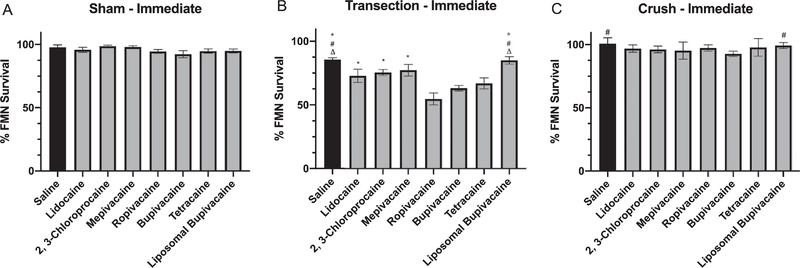Fig. 2.
Average percent facial motoneuron survival after immediate local anesthetic treatment. Bar graph demonstrating average percentage of facial motoneuron survival at 4 weeks after facial nerve injury and immediate treatment with saline, lidocaine, 2,3-chloroprocaine, mepivacaine, ropivacaine, bupivacaine, tetracaine, and liposomal bupivacaine. A - Sham injury, B - Transection injury, C - Crush injury. * denotes statistical difference compared to ropivacaine (P<0.05). # denotes statistical difference compared to bupivacaine (P<0.05). Δ denotes statistical difference compared to tetracaine (P<0.05).

